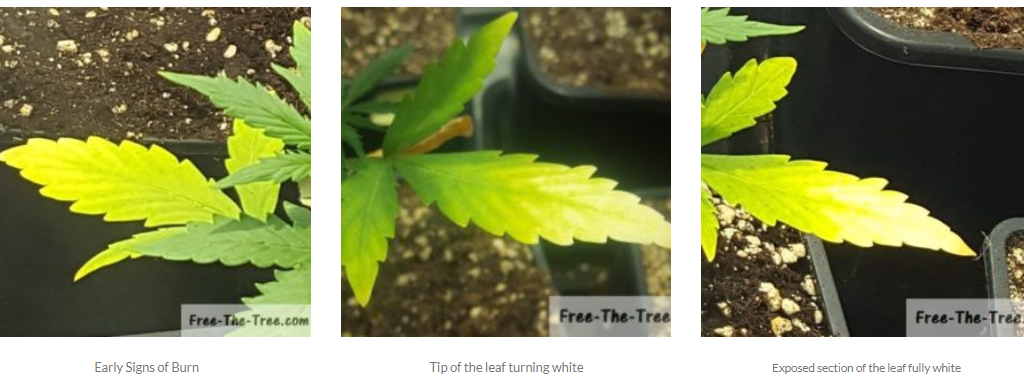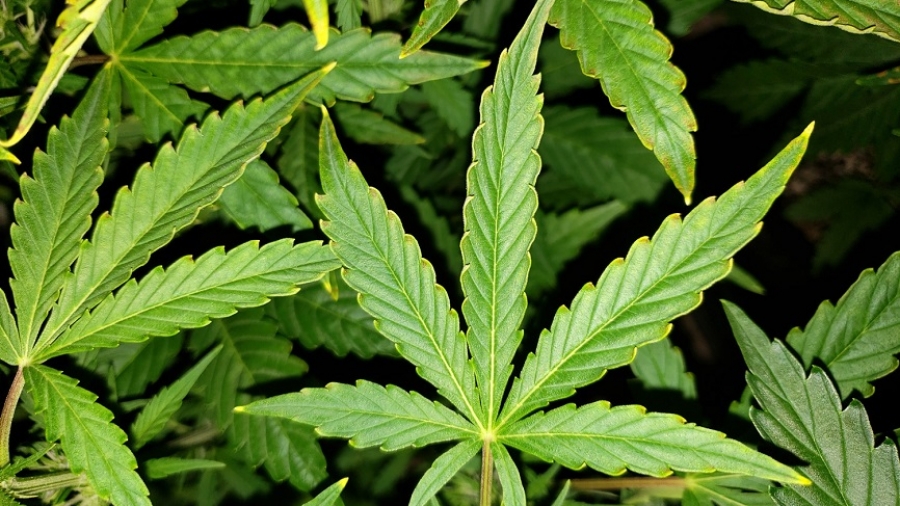Although not fixable with a nutrient solution boost, this is a problem that your plant can survive easily. As long as it’s not too late, after this article, you’ll know how to fix it.
This is a problem faced with indoor plants only. If you have an outdoor grow operation and feel your cannabis plants are suffering from light burn, forget it! You’ll probably want to look into other conditions that can show similar symptoms. The sun is too far out to damage your outdoor plants. Cannabis has existed for longer than the human race. It has developed well enough to handle the sun’s heat and light.
Light burn will only happen to an outdoor plant in a specific situation. It might happen if you grew it in the shade and just now transferred it into the light. In cases like this, the plant won’t be used to the heat and light and will eventually die.
What Is Light Burn?
Light burn happens when the light source is too close or intense for the leaves “burning” the chlorophyll buds away, rendering the leaf useless.
This is also one of the reasons why you see the leaf turn white.
What are the symptoms of Light Burn?
- Symptoms start to show on the leaves closest to the light or the most exposed ones.
- At first the leaves start to turn yellow, which can be confused with Nitrogen Deficiency.
- Only most exposed sections are affected.
- After this the leaf will turn totally white and possibly browning tips.
- Even if the leaf is fully affected by the light burn, they will not fall easily (big difference with Nitrogen Deficiency)
- Your leaves will not recover from the symptoms.
I know that it be kind of hard to picture this in words so here’s the evolution in image
As always, you can click on the images to get the full view.
Evolution of Light Burn

WHAT IT IS AND HOW TO IDENTIFY IT
• Bleached Buds
One surefire symptom of light burn is bleaching of the flowers. This phenomenon occurs when flowers are located too close to high-powered lights. You may have seen images online of pure white “albino” cannabis flowers. This might look like the intentional development of rare genetics, but the fact is, most of the time this is simply bleaching. Luckily, it’s very hard to miss your flowers turning bright white.
Although white buds may look interesting, most of the time they have been rendered useless. The heat degrades cannabinoids present in the resin, which causes buds to lose potency. The scent and taste of these buds will also be less than desirable. The terpenes responsible for these traits are highly volatile aromatic hydrocarbons, and excess heat will also cause them to degrade.
How to fix Light Burn issues on Marijuana?
Removing light stresses on your plants is pretty forward.
Generally the main reason for light burn is linked to the fact that the light source is way too close to the tip of the plants.
This means that the fix is simple, bring your lights up further from the top of your plants. If you can’t do so try to reduce the intensity of the light by switching to a lower intensity light bulb.
Yellow Leaves
Yellow leaves are another sign that your plant is being subject to light burn. However, yellow leaves can also signify nitrogen deficiency. The difference is that yellow leaves caused by this nutritional deficiency start from the bottom of the plant, display significant wilting, and will either fall off or are extremely easy to remove. On the other hand, yellowing caused by light burn will occur at the top of the plant, and these leaves will be much sturdier and harder to remove.
HOW TO SOLVE IT
The first thing you should do is move your plants a bit further away from the lights. This can either be done by moving the plants or by moving the lights, if you have the space. Take into consideration the most affected areas of each plant when choosing a new location for them. You can also remove some of your lights. If you have these well organized, it shouldn’t hurt your plants to remove a few bulbs.
If reducing the light or moving the plant isn’t an option, you can always low stress train your plants. This is a technique for obtaining more yields, where you try to keep the plant’s branches all at the same height. As the stem gets taller, it should be bent sideways and kept in that position with an external aid.

Try decreasing the temperature of the room too. Do this very slowly and always keep the temperature consistent. The plant will need time to adjust. Any change you’ll need to make to a plant’s environment or medium needs to be done carefully and patiently. It won’t matter how well you water and feed your plants, if you don’t take proper care of the environment, the plant will die.
HOW TO PREVENT IT
HOW TO PREVENT IT
Growers can also utilise a lux meter to measure how much light different parts of their plants are being exposed to. These devices are used to measure lux, the unit of illuminance, per metre squared. They are handy as they offer readings regarding the intensity of light beaming down on any given area. Lux meters are ideal for hobby and small-scale growers as they are leagues cheaper than other light-measuring devices on the market. Growers can use them to determine if their plants aren’t getting enough light to produce an optimal yield, or if they are getting too much and are at risk of light burn.
A general healthy range for cannabis plants is between 35,000–70,000 lux during the vegetative phase and 55,000–85,000 during the flowering phase. If you notice any of the symptoms above and your lux meter is giving readings above these values, move your light source further away from your plants to reduce the intensity.

Hi there. I had my plant indoors. Now that the weather is getting better I have put it out side. Now my leaves are turning white. What is it? How can I fix it? Thanks in advance.